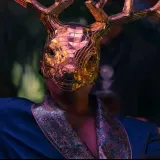Case File #008: The Yuba County Five – Frozen Fear in the Sierra Nevada
Status: Partially Resolved – Unexplained Circumstances
Date Filed: February 25, 1978
Last Reviewed: May 31, 2025
Location: Plumas National Forest, Sierra Nevada, California, USA
Subjects: Gary Mathias, Jack Madruga, Bill Sterling, Jack Huett, Ted Weiher
Filed Under: Unsolved Disappearance – Cold Case – Psychological Factors
Access Level: Public File – Autopsy Photos Sealed
Introduction: A Game Night That Ended in the Wilderness
On the night of February 24, 1978, five young men from Yuba City, California, disappeared without a trace after attending a college basketball game in Chico. Their names were Gary Mathias, Jack Madruga, Bill Sterling, Jack Huett, and Ted Weiher. These men, later dubbed “The Yuba County Five,” were not typical missing persons: all had mild intellectual disabilities or psychiatric conditions, and they were incredibly close-knit.
What followed was a haunting mystery involving a car abandoned on a snowy mountain road, bodies discovered months later under bizarre circumstances, and one man — Gary Mathias — who has never been found. The case has since become one of the most disturbing unsolved disappearances in American history.
The Disappearance
The five men, aged between 24 and 32, were passionate about basketball and life’s simple routines. On February 24, they piled into Madruga’s 1969 Mercury Montego and drove to Chico State University to watch a game. They were supposed to return home that night — they had a Special Olympics basketball game scheduled the next morning. They never arrived.
Their families were immediately alarmed. These weren’t men who stayed out late or made impulsive decisions. Every single one of them had routines, dependencies, and mental health limitations. The alarm was raised by the next morning.
The Abandoned Car
On February 28, a forest ranger discovered Madruga’s Mercury Montego abandoned in a remote area of the Plumas National Forest, near the town of Oroville — nearly 70 miles from Chico and far off their expected route. The car was found stuck in light snow, but oddly, the undercarriage was undamaged. It could have been pushed free with little effort. Inside were programs from the basketball game, candy wrappers, maps, and soda cans. The keys were missing. The gas tank was a quarter full. No sign of struggle.
Why they ended up so far off course — on a rugged mountain road in freezing conditions — has never been explained.
The Long Silence and the Spring Thaw
For months, no sign of the men was found. Snow covered the mountains, and search efforts were hindered by the terrain. Then, in early June, as the snow began to melt, a gruesome discovery was made.
19.4 miles from where the car was abandoned, deep in the forest, a Forest Service trailer used as a summer shelter was found broken into. Inside was the partially mummified body of Ted Weiher, stretched out on a bed, wrapped in eight sheets. His feet were badly frostbitten, his beard had grown long, and he had lost between 80–100 pounds. Next to him were a dozen opened cans of C-rations. Despite food being stocked in a nearby storage locker, it appeared he never accessed it.
Medical reports estimated he had survived for 8–13 weeks after their disappearance.
The Bodies and the Questions
Soon after, the remains of Jack Madruga and Bill Sterling were found 11 miles from the car, in opposite directions, along the same road. They had died of hypothermia — one found with no shoes, another with signs of dragging. Days later, bones belonging to Jack Huett were found, scattered near a stream two miles from the trailer.
Gary Mathias, who was being treated for schizophrenia but was reportedly stable, was never found. Only his tennis shoes were discovered inside the trailer, suggesting he may have left barefoot into the snow. No further trace of him has ever been confirmed.
Unanswered Mysteries
The case is riddled with chilling inconsistencies:
- Why did they drive into the mountains at night, far from their route home?
No one they knew had connections to that area, and the road was treacherous even in daylight. - Why abandon a working car and walk uphill into the wilderness?
Even though the Montego was found in working condition, they left it behind without trying to free it or seek help nearby. - Why did they break into a trailer and not use available supplies?
Inside the trailer was food, matches, clothing, and even propane heating. Yet none of it was used — Weiher simply lay in bed and died slowly. - Where is Gary Mathias?
A military veteran with survival skills, he is the only one never found. Was he the last to survive? Did he succumb to the elements or vanish by other means?
Theories
Many theories have surfaced over the years:
- Disorientation or Mental Confusion:
Perhaps the group got lost or followed a faulty memory. But this does not explain the route or their behavior once stranded. - Panic After a Fight or Threat:
Some speculate they were threatened or chased, leading them into the mountains. But no physical evidence suggests foul play. - Deliberate Escape:
A more fringe theory suggests Gary Mathias led them into isolation, either in a psychotic state or with some larger plan. However, this is purely speculative. - Paranormal Involvement:
Given the strange behavior and lack of logical explanations, some have proposed extraterrestrial or supernatural causes — an energy phenomenon, mass delusion, or even abduction attempts gone wrong.
Legacy of Fear
The Yuba County Five case remains open in name, but functionally cold. No charges were filed. No foul play was ever confirmed. But those who’ve studied the case — law enforcement, journalists, and true crime experts — agree on one thing:
Nothing about this makes sense.
It is a case of five vulnerable men, caught in a place they shouldn't have been, behaving in ways they normally wouldn’t, and dying in conditions they could have survived — if only they had made different decisions.
To this day, families of the victims still ask: Why?
References
All sources used in this case are listed in the References Archive. Each link corresponds to verified data, public records, or expert documentation.

